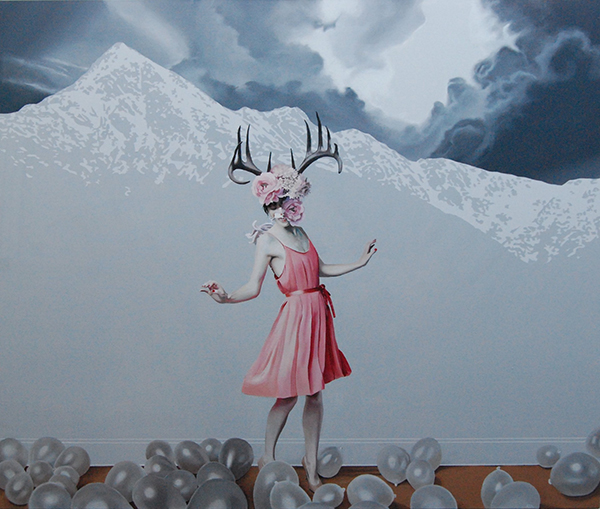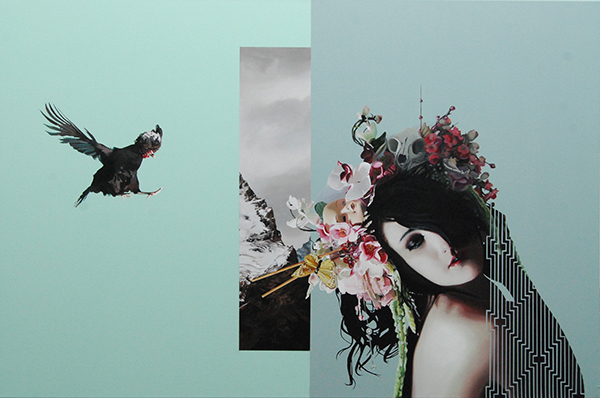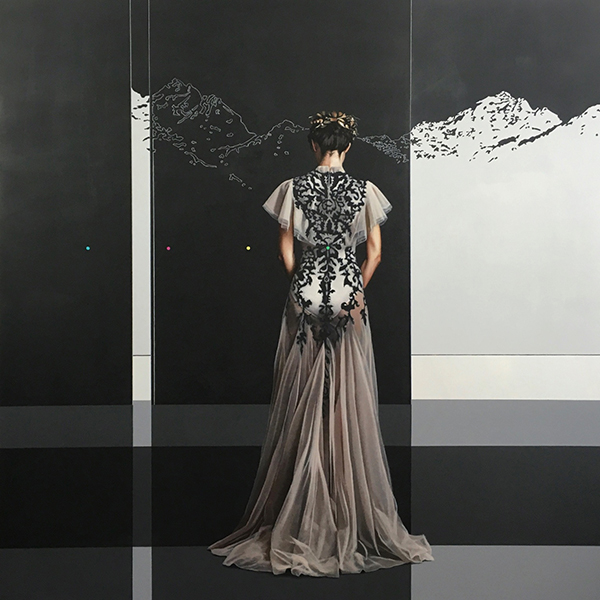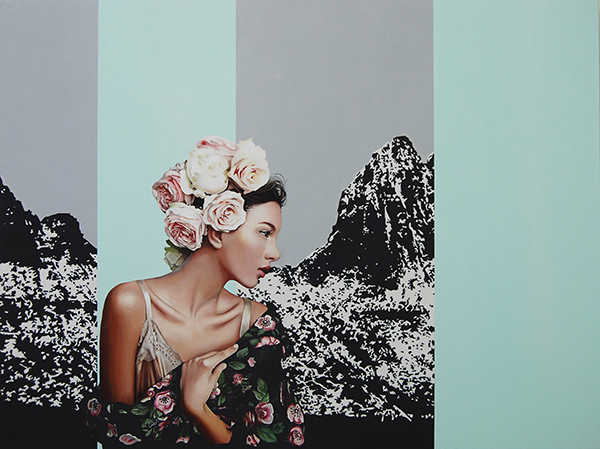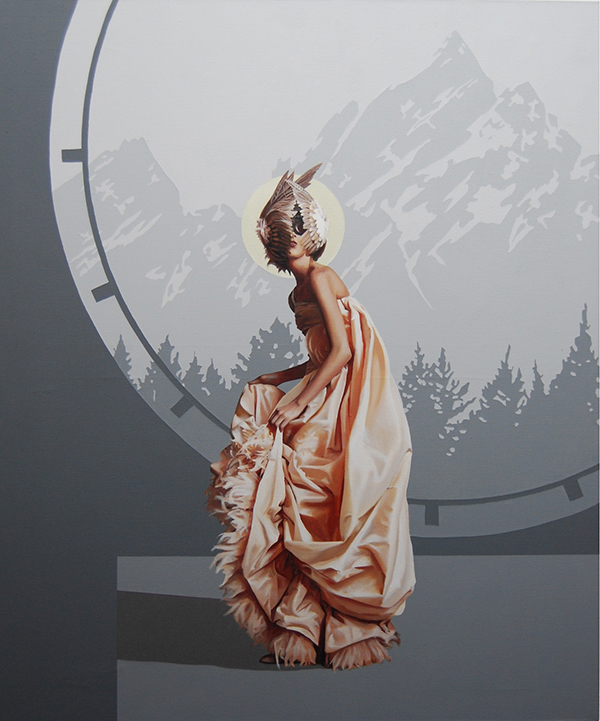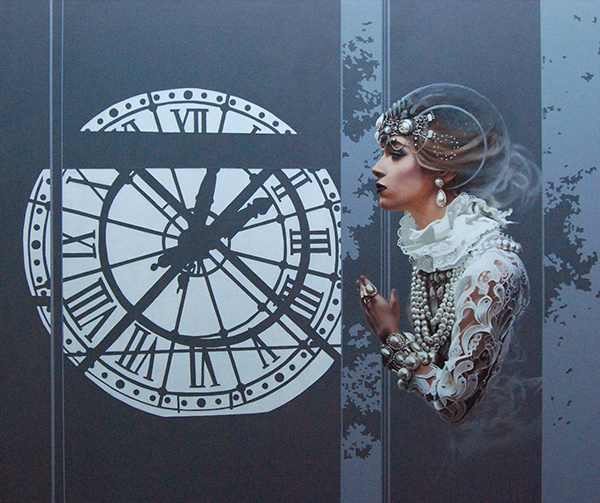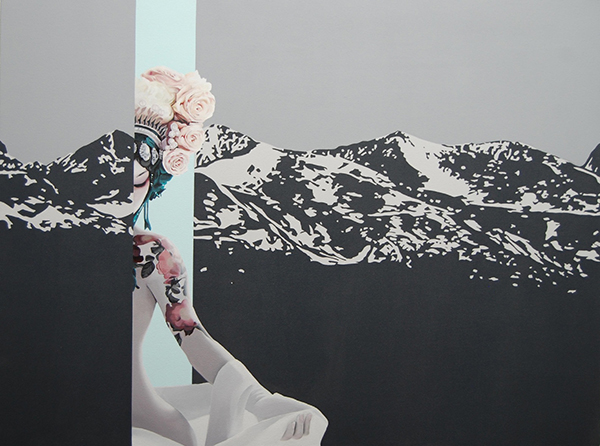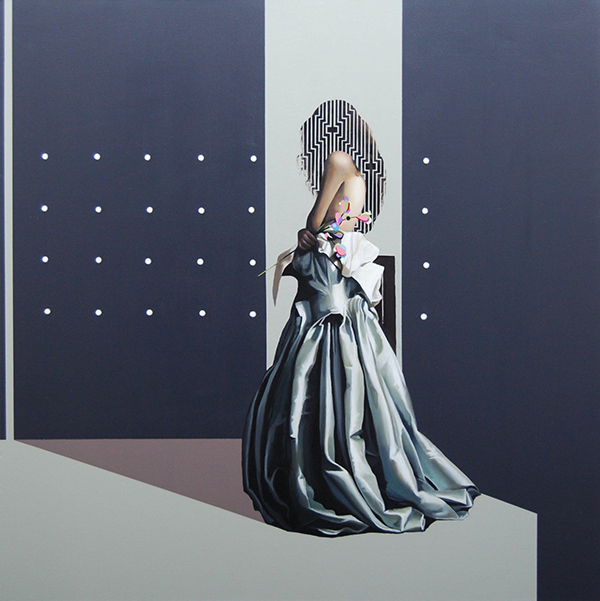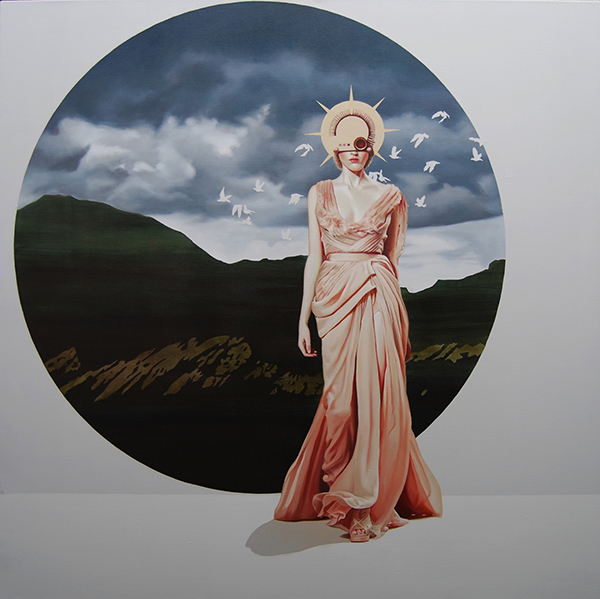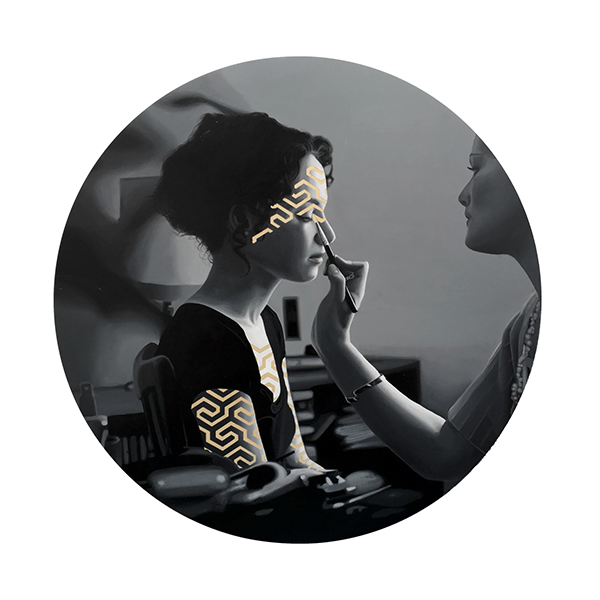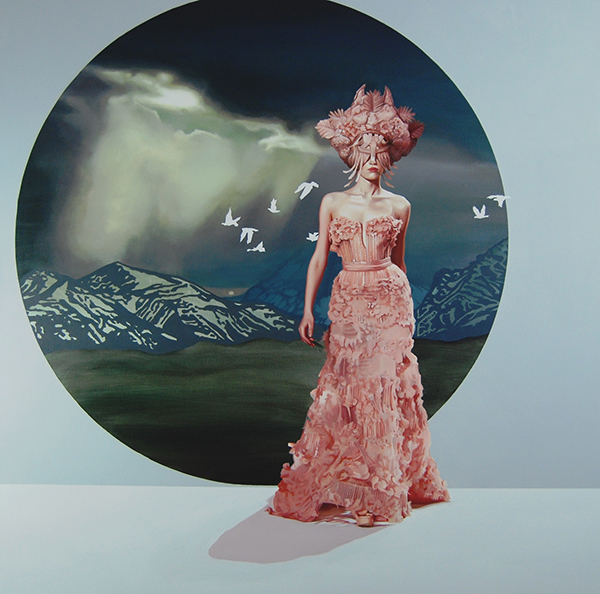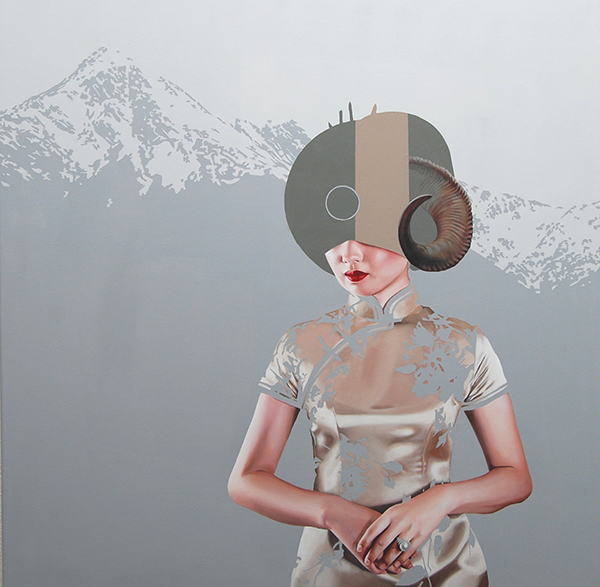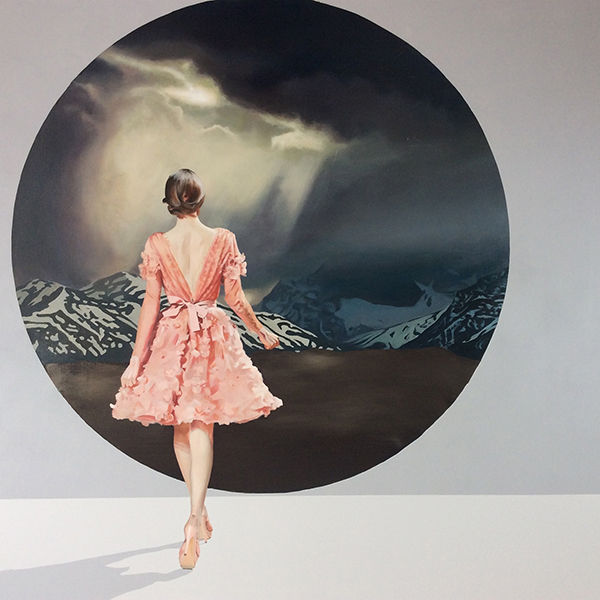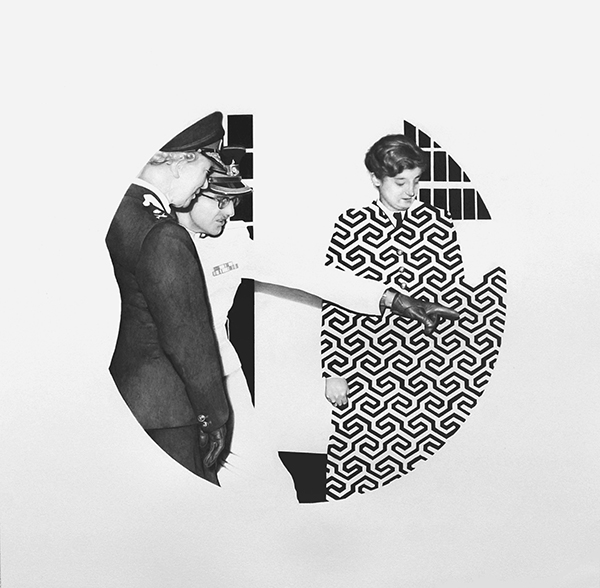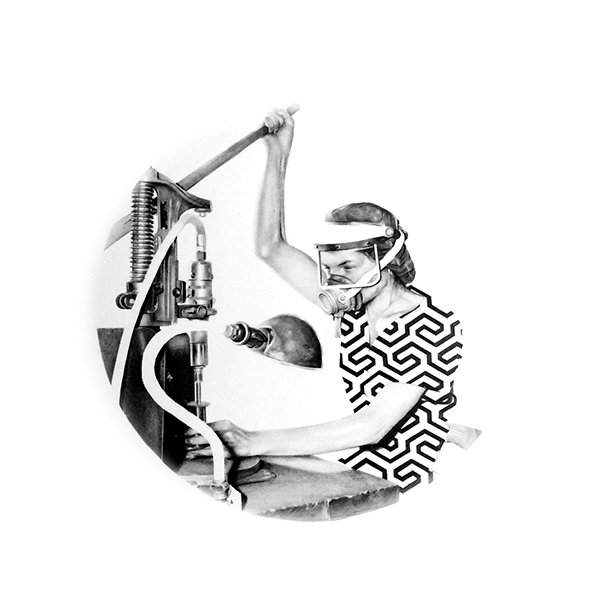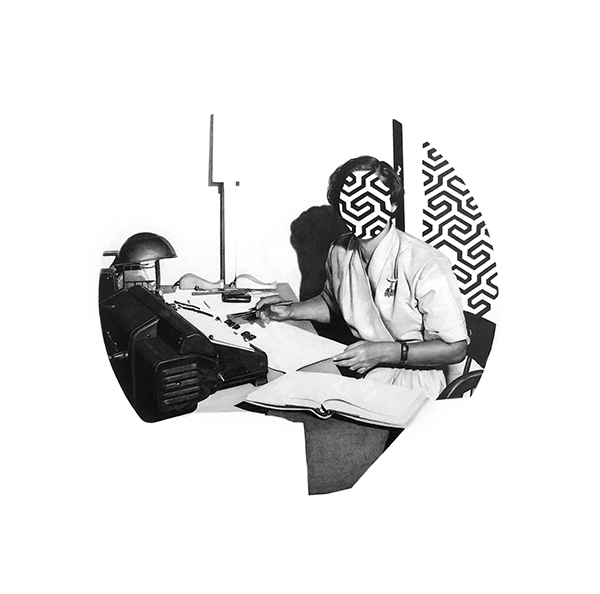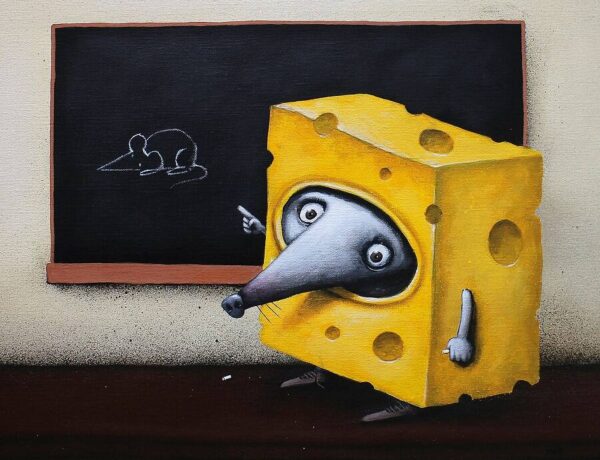Sometimes darkness is not a monster, not the three-eyed creature covered in human entrails and blood. Sometimes darkness is the diaphanous, mythical creature walking barefoot between our subconscious and conscious minds, bearing our desire for whimsical fairy tale creatures. Kristian Evju’s warrior goddesses appear to be waging the same war as the one soldiered by fallen angels in a quest for their freedom, their identities. They, like him, are ingeniously hidden in plain sight. After a long journey to define his individual and cultural identity, Kristian Evju reveals his processes and the technical execution of his drawings and paintings, confessing how hard, yet liberating it can be to combine conflicting memories and cultures and regenerating his roots.
You were born in Norway, a kind of faraway land where the magic of atmosphere and landscape meets the dark tales of poets such as Arnulf Øverland. “Everything I saw tortured me, then one day my eyes exploded,” wrote Øverland. Now you’ve moved to London, why?
I left Norway in 2003 to study art in Edinburgh, Scotland. The idea was to finish my Bachelor’s degree, then move back home. But this never happened. I decided to study in Edinburgh at the University offered me the only course specifically aimed at painting and drawing. I also had a strong idea of Scotland as a mythical and romantic place, where I could feel at home, and I did. I had been studying psychology at the University of Oslo in an attempt to do something less self-indulgent than art, but the feeling I should be pursuing my talents became overwhelming. It sounds both cliché and melodramatic, which it probably was. But I was in my early 20’s, and so there were naturally many feelings guiding my decisions.
Are there major cultural differences between Kongsberg, where you were born and raised, and London? How did they affect the evolution of your work?
I’ve realized that context is incredibly important. Our visual filters might be our only claim to any sense of autonomy, and these are obviously shaped by the stimuli available to us. Things I’ve seen inform my work, so being in a place where there are lots to see is important. I grew up in a very small village about an hour’s drive north of Kongsberg, and so I was raised to think of the deep, wild forest as a protective, peaceful refuge. My father was an artist, too, painting national romantic landscapes informed by Old Norwegian fairytales. We didn’t have a TV, so my father would tell us stories through drawings – letting us decide on the content. We would suggest, and he would draw. I think this sense of drawing and painting as storytelling is still a strong part of how I look at art and life in general.
It is easier to believe in things when you are surrounded by nature. The lack of human influences and constructs tears away the illusion of control. But at this point in my life I have lived more than half of it in the big city, and so I am, like most young western males, an agnostic. Disregard is part of city life somehow, but then again, I love being surrounded by people and the things they make and do. As you can imagine, the transition from wilderness to metropolis, fairytale to thesis, has influenced the way I make work. It feels, retrospectively, like such a journey can never be smooth, or even gradual. It consists of quite violent shifts and jerks in perspective and paradigms. The changes in my use of source material exemplify one such journey: I grew up believing strongly that the only right way to draw was by using one’s imagination. To utilize a source, whether it was drawing from life, or even worse, a photo would be mere copying and plagiarism. I felt like a fraud at my first life drawing session at college.
These ideas are actually still prevalent in the way people think about art where I grew up. Even my artist father partially subscribes to it, and it took him a while to accept it when I started drawing from photographic source material. For myself, I moved from figuration to abstraction for a time when I started studying art, maybe to save myself the cognitive dissonance, maybe to postpone the act of discarding old ideals while my slow country mind caught up to the flurry of contemporary art history.
Looking at your work, the first thing that comes to mind is the presence of a kind of “metaphysical clock” in which figures and abstract forms appear immersed. Let’s talk about the concept of time since it’s what first struck me in your work.
Painting, and especially drawing, has become a way of dealing with the passing of time for me. Drawing is my way of investigating something very slowly… maybe even to get rid of the automatic prejudice we rely on to categorize and make sense of the world around us. Time is a very abstract concept, and for me it contains two dramatic polarities, accumulation and decay. Consider memories and how subjectively they are stored, and how we change them whenever they are retrieved, shared, and then put back into long-term storage. We cannot fully trust them –anyone who has discussed their childhood with siblings will understand this.
My subjects are more often than not women. This is not necessarily a conscious decision, maybe it has something to do with the need to distance myself from self-portraiture or characterization, or maybe it is more a matter of perspective. Women have always surrounded me… my sisters and aunts, and later the overwhelming majority of female art students.
There is also the matter of lifetimes to consider. The moment the idea of a female life partner is taken into account; time is perhaps externalized more by certain natural milestones, accumulating in death, which is, in the case of my own – the end of my subjective time, and ultimately my loss of her presence. Having said that, all my projects this far has included a few male subjects too, and so the concept of shared time in terms of lives can easily include the men in my life.
We can’t, of course, talk about time without talking about space and, ultimately, our own consciousness since these three elements tend to be intertwined with one another. Why are the protagonists of your compositions isolated from a normal, realistic figurative context or background?
When I first started introducing figures into my work, I called it an intrusion of three-dimensional forms into flat, abstracted space. As the figures became more prominent, it felt less appropriate to see it as an intrusion… it felt more like a staging, as if the subject, isolated in abstract space, became hyper-real somehow. In a way, I feel that the juxtaposition between documentation and abstraction makes one more aware of the suspension of belief taking place in the reading of any image. As contemporary viewers, we are used to finding plots through increasingly brief, yet complex means. Just think of contemporary advertising or theatre. Questions like “Is this real?” or “Is this true?” or even “Who am I?” become more complex through films like The Matrix, or more recently, Inception. We are used to fast, easily accessible cues, but less didactic narratives, and so my work is an attempt to not over-explain, but to provide instantly accessible visual cues, leaving it up to the viewer to formulate any narration or sense of meaning.
What else can we say about the mysterious figures populating your work? Some seem as if they are straight out of fairy tales while others, in your recent series Punchcard, are obviously ordinary people, anonymous workers…bloodless victims of a factory world.
My way of working has always been quite reactionary, and nothing in my life is irrelevant in terms of what informs my work. I often work in series as a means to explore any given topic simply because one work rarely illuminates or resolves anything by itself. The figures in my work are often a response to some abstract space that has to be occupied. My sketchbook is filled with rectangles, and these are abstract designs outlining what the composition might look like. I sketch very quickly and intuitively, and try not to define my ideas too much. Then I search for source material that might somehow fit the apparent need of the composition, or design. I like to think of it as moods or genres, rather than concepts so after having worked on an almost surreal series like Velvet Bloom in 2014, I needed something more documentary feeling, resulting in the project Assemble: Dissemble in 2015 and Punchcard in 2015/16.
Velvet Bloom started as a painting demo for the Artist Magazine in 2014, and I loved working on something fairly flowery and indefinable, with a hint of the surreal. Punchcard is in a way exactly the same but whilst Velvet Bloom is, simply put, re-contextualized fashion inspired imagery mixed with abstract, and slightly surreal designs, the source material for Punchcard was collected through industrial archives from the late 40’ to early 60’s, and so the series took on a clear feminist awareness and documentary feel.
These two sentiments might seem completely opposed, and in a way, the series’ are very reactionary, in both format and content, to each other. I think, however, that if you look closer, you will find the same underlying revelation… both series are equally illusionary. Convincing perhaps, but still just beautiful lies, each and every work is constructed like a collage from a series of random sources, imaginary or real, to present a narrative that is convincing enough to entertain a sense of purpose. But the message they convey can only, at the best of times, evoke some mirroring sentiment, meaningful or not, in the viewer. In this, I have no control, and am probably the least reliable forger of truths or insights. As the artist, I am too involved.
You sent me a note about Jorge Luis Borges’ biographer Edwin Williamson, who “named poetic faith as a crucial ingredient to aid the idea that facts or truth come secondary to the needs of the narrative as a whole.” What does that mean in relation to your work?
This is where the illusion of truth is tested. Truth, according to Derrida, is by definition impossibility, due to the unpredictability of how language is interpreted. Meaning is uncontrollable; as it generates too many signs in each one of us …we are guaranteed to misunderstand each other. But within this confusion there is a great, and perhaps slightly romantic optimism – we keep trying to be understood, and to understand. And there are also great possibilities.
I think that any contemporary individual, especially in the age of browsing and using social media for information, that truths or facts have become the random building blocks we use to constructing our personalized sense of reality. I am fascinated by this, and try to somehow mirror it in the way I assemble and compose my work.
How does beauty, and more specifically, female beauty, fit into this scenario?
Beauty has been a problematic term for a long time. I think there are different ways of looking at how it fits into my work. In a cynical way, you could say that beauty is a lure to make the gullible engage, but then I would have to include myself, which would quickly invalidate that superior tone. I collect and include things I like looking at in my work, and often I find them beautiful. I think Velvet Bloom is the most obvious, as I was working with a lot of source material from contemporary fashion and design, and it followed naturally that it portrayed a lot of seductive elements… a lot of dresses and fabrics, hats, feathers, fur and jewelry, but also dramatic landscapes and skies. There is a close link between beauty and the sublime. There are elements of the savage, primal, and uncontrollable as beauty links desire, lust, awe, and dreams of possession. When it comes to the desirability of women, I think there is a fragile balance between the contradictory images of goddess and possession. Personally, I feel lucky to have been born within a society where women have had a higher chance of freedom and opportunity to become formidable, regardless of aesthetic ideals.
Have you been shifting from painting to drawing?
I have always drawn a lot. I started painting again in 2014, after having worked on two rather heavy – drawing projects, Dark Skies (2011-2013) and Dark River (2013). Dark Skies was especially dark and documentary like, discussing information streams and the human tendencies towards suspicion, conspiracy and intrigue. Dark River might have been a small digression on the same topic, but a looser one, on much larger formats. It turned out to be the transition leading up to Velvet Bloom.
Drawing can be very physically demanding over time, so I needed a break from it in 2014. That’s when I started to paint. I guess the more colorful and fantastical elements were my way of reacting against a long period of making many dark, serious works. The fantastical is a way of talking about more primal, subconscious stirrings, and it might be more related to our physicality on a more tribal or ritual level.
What are some of the most important exhibitions where your work has been included so far? Any upcoming shows?
Now I am working towards a solo show at Gulden Kunstverk in Norway in June, and I am making some work for a drawing biennale in Germany this summer. My next show in the UK will be a solo show at the Arusha Gallery in Edinburgh in December. Next year I will have my first solo show with my new Norwegian gallery – Galleri Semmingsen, and another solo show with my German gallery Venet-Haus later in the year. There are also a few group shows scattered throughout the year, so there’s a lot of studio time ahead.
The show that really made my career possible was probably the Annual National Exhibition of the Arts in Norway in 2007. This is a Norwegian exhibition hosted by the state, where the democratically selected national jury selects works. I won the “debutante award” there, and this actually helped me survive as a self-employed, full-time artist for those next few years. It also gave me my first museum show. I was included in the show again in 2012, but the first time was quite special.
One of the most exciting, but less prestigious shows was probably my solo show in Pakistan in 2013. I spent 10 days there lecturing at a handful of universities in Lahore, and got an introduction to a very exciting and colorful culture. I also spent a summer in the small Italian sculpture town of Pietrasanta and had a solo show in a small gallery there. When I get old, I want to live there! There are definitely more shows that are important on my CV, but these are very fond and important memories, and exemplify a part of my job that I really love.


